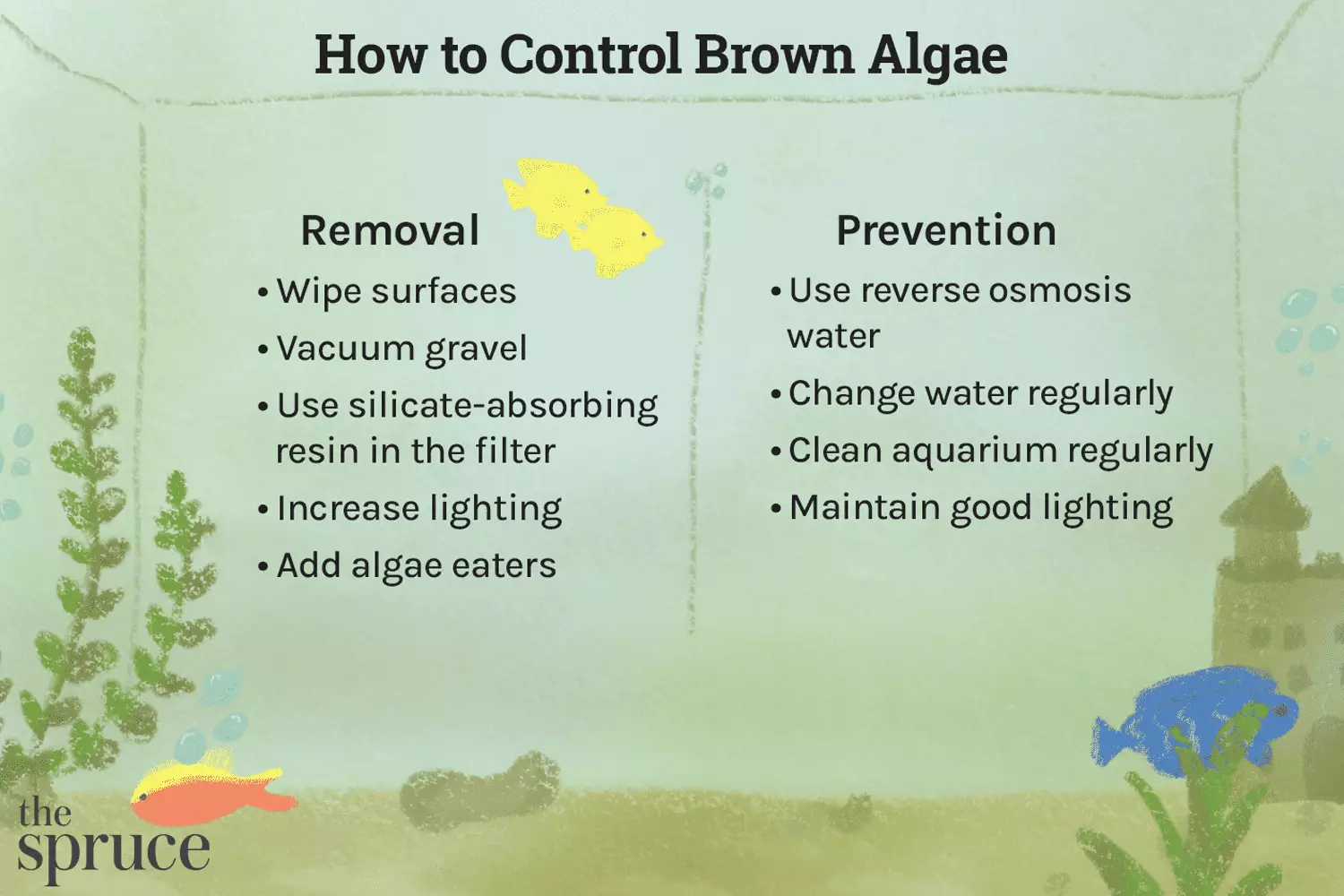Brown algae, commonly referred to as Silica Algae, can become a problematic aspect of maintaining an aquarium, particularly for new fish keepers. This type of algae typically manifests as brown patches covering the gravel or glass within the tank, forming a thin, dark layer that detracts from the overall aesthetic of the aquarium. These algae thrive in conditions often found in freshly established tanks, where new aquarium owners may find this unsightly development concerning.
It’s essential to differentiate Brown Algae from other types of algae, such as true brown algae of the Class Phaeophyceae, which primarily exist in marine environments, encompassing seaweeds like kelp. The algae troubling aquarists are, in fact, diatoms (Class Bacillariophyceae) – single-celled organisms that can form colonies and need proper conditions to flourish in an aquarium setting.
Diatoms, the causes of Brown Algae, utilize silica and other nutrients from their environment to grow, which can become overabundant in aquariums for various reasons. High levels of silica can stem from tap water that contains significant amounts of silicic acid or substrates like silica sand that leach these compounds into the water. This excess silica provides an ideal environment for diatoms to proliferate.
Additionally, elevated nitrate levels may contribute to their growth. Overfeeding fish, excessive waste buildup from decaying organic matter, or an overcrowded tank can lead to high nitrate concentrations. By closely monitoring and manipulating these factors, fish enthusiasts can significantly reduce the likelihood of brown algae developing in their tanks.
While Brown Algae might not directly harm fish, their presence is often indicative of underlying issues, particularly regarding water quality. An aquarium bursting with diatoms can create not just an aesthetic problem but can signal that the ecosystem inside the tank is not functioning optimally. Algae compete with fish and plants for valuable nutrients and may hinder the growth of other beneficial aquatic plants.
Unlike blue-green algae, which can form troublesome, slimy sheets that stick to surfaces, Brown Algae is generally patchy and easily removed. Yet, allowing them to exist unmonitored can signify fluctuating water chemistry that may lead to more significant issues down the line.
Cleaning brown algae from your aquarium is a relatively straightforward process. Regular maintenance, including wiping down tank surfaces and vacuuming gravel, can help manage their presence. Because Silica Algae do not cling as tenaciously as other algae types, they can often be wiped away easily without the need for heavy scrubbing.
To further assist in controlling brown algae growth, fish keepers can incorporate specific algae-eating species into their aquariums. In freshwater tanks, the plecostomus or otocinclus catfish are great choices for consuming diatoms. For saltwater environments, various invertebrates and fish serve the same purpose.
To prevent future outbreaks, it’s crucial to establish a routine that includes frequent partial water changes, regular tank cleanings, and ensuring the aquarium receives adequate light—approximately eight hours each day. Enhancing water quality by being mindful of nutrient levels will also contribute to a healthier aquatic ecosystem.
Creating an environment less conducive to brown algae requires a multifaceted approach. First and foremost, ensure proper lighting and water chemistry—investing in reverse osmosis water can help dilute high levels of nitrates or silica within your aquarium. By acknowledging the causes of Brown Algae and implementing proactive maintenance measures, a cleaner tank and healthier aquatic environment can be achieved.
Despite best efforts, it remains possible for diatoms to develop even in well-maintained aquariums, especially when the tank is still cycling. However, immediate management of sudden algae growth by frequent cleaning and monitoring water parameters can significantly diminish the risk of long-term issues, ensuring your aquatic space remains beautiful and thriving.
Understanding the dynamics behind Brown Algae’s growth and implementing preventive strategies are crucial for any aquarium owner. By regularly caring for your tank and addressing the underlying conditions that contribute to the algae’s proliferation, a vibrant and appealing aquatic display is within reach.

